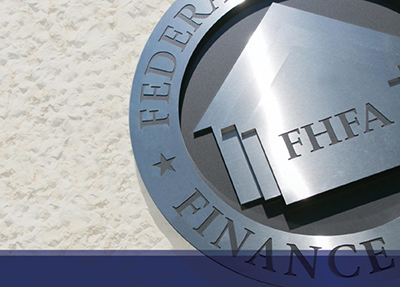
MBA Offers FHFA Recommendations on Housing Equity

The Mortgage Bankers Association, in a letter to the Federal Housing Finance Agency, offered a set of recommendations addressing the Agency’s efforts to improve home equity, particularly with respect to the racial homeownership gap.
“FHFA’s efforts in this area are well aligned with MBA priorities and initiatives,” MBA President & CEO Robert Broeksmit, CMB, wrote in the letter to FHFA Director Sandra Thompson.” As you know, last year MBA announced its Building Generational Wealth through Homeownership initiative. The goal of this initiative is to reduce the racial homeownership gap and provide African-American and Hispanic families with opportunities to benefit from the wealth-building potential of sustained homeownership.”
MBA offered several near-term recommendations. It said FHFA and the Enterprises (Fannie Mae and Freddie Mac) should explore sensible expansions of eligibility for the Fannie Mae HomeReady and Freddie Mac Home Possible offerings.
MBA noted under current guidelines, eligible borrowers cannot have incomes above 80% of the AMI. Specifically, at a minimum, the income thresholds for these programs should be returned their previous standards:
• allow borrowers with up to 100% of AMI to be eligible for these programs, and
• eliminate the income limit for properties located in low-income census tracts.
MBA said while it commended FHFA’s decision to eliminate upfront fees for Home Ready and Home Possible loans last month—which should increase affordability for those who are currently eligible—more could be done. “Even with this positive step, raising the AMI limits to expand access to these programs would still be beneficial as there are key features of Home Ready and Home Possible loans, such as a 3% down payment, that make homeownership attainable for historically underserved borrowers,” MBA said. “The recent changes increasing affordability, paired with expanded access, could have a considerable impact.”
The letter said access to capital required for a down payment is often a barrier, or even the sole barrier, locking borrowers from purchasing a home. “The wealth gap for minorities has been well documented, and as FHFA has noted, this lack of capital largely stems from discriminatory practices like redlining which have prevented communities of color from building wealth through homeownership for generations,” MBA said. “For this reason, Black families are less likely to have received or expect an inheritance. An increase in the AMI threshold could better serve minority borrowers who have the means to meet their monthly mortgage obligations but may lack family resources or wealth to assist with a larger down payment.”
MBA said returning the income thresholds for HomeReady and Home Possible to 100% of AMI should be the first step in expanding and exploring other opportunities to enhance these products. “There could be opportunities to reach additional underserved borrowers by increasing the income thresholds in targeted geographies,” the letter said. “Another idea that should be explored is a special purpose credit program that raises the income thresholds even higher (i.e., 120% or 150% of AMI) for Black and Hispanic borrowers to expand homeownership opportunities while remedying prior exclusion from these opportunities.”
As FHFA continues to evaluate various ways to expand eligibility, MBA said encourages closely monitoring the impact of these changes to ensure targeted borrowers are being reached.
“It is important that all efforts to avoid unintended negative impacts, such as gentrification, are taken,” MBA said. “For example, MBA recommends that Freddie Mac and Fannie Mae evaluate their communication and outreach processes related to the HomeReady and Home Possible programs. Ensuring minority and underserved borrowers are properly informed about these opportunities will be key to the success and impact of these enhanced programs. MBA and its members welcome the opportunity to work with the Enterprises on reaching out to potential borrowers.”
